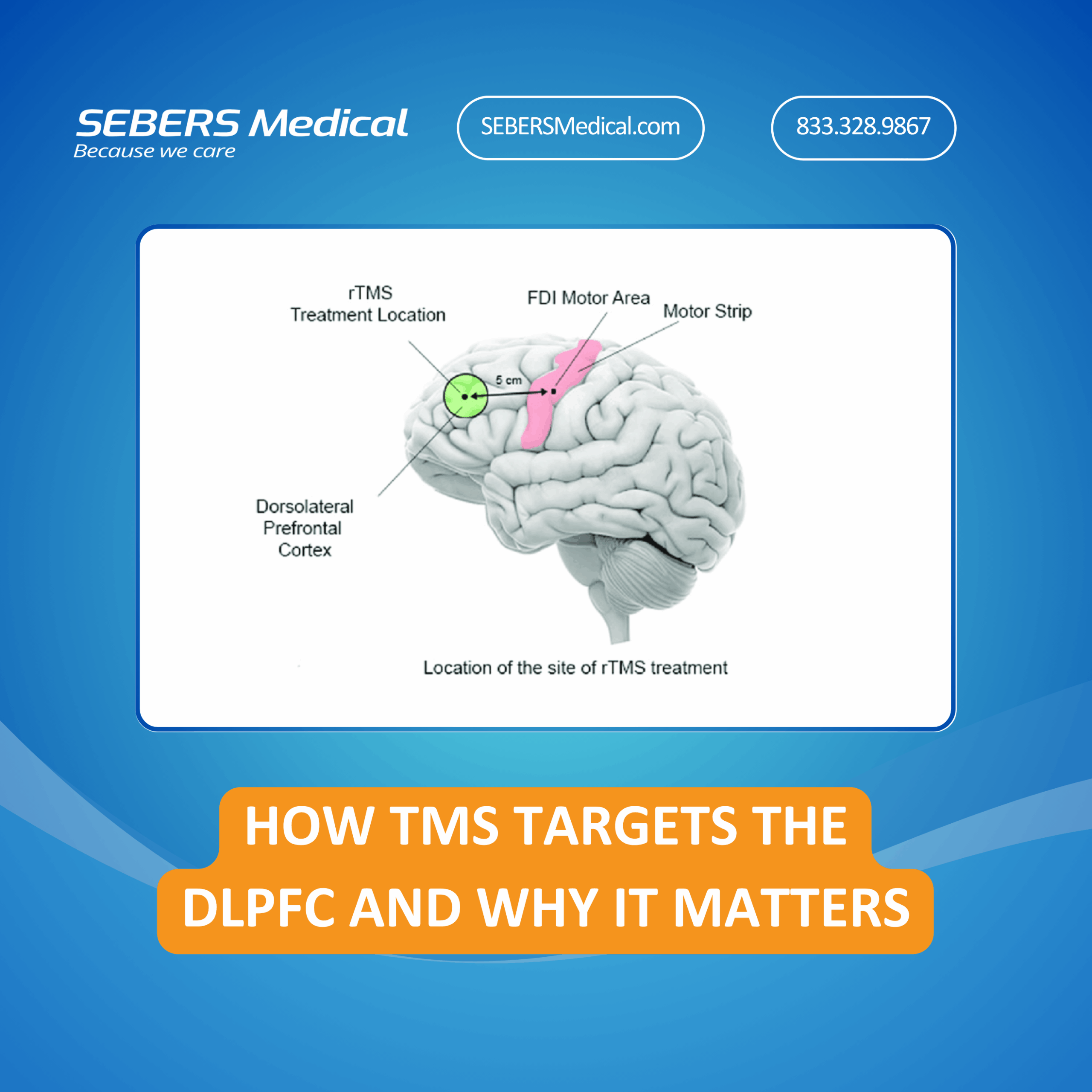Transcranial Magnetic Stimulation (TMS) is more than just a buzzword in modern psychiatry—it’s a scientifically backed, FDA-cleared treatment that offers new hope for people with treatment-resistant depression. But while the therapy itself may seem cutting-edge, understanding why it works can bring powerful insight to both patients and providers.
One of the most vital components of TMS therapy is its precision: TMS targets the DLPFC (dorsolateral prefrontal cortex), a key region in the brain associated with mood regulation, cognitive control, and emotional resilience. So what exactly is the DLPFC—and why is it the focus of TMS?
Let’s break it down.
What Is the DLPFC?
The dorsolateral prefrontal cortex (DLPFC) is a region in the frontal lobe of the brain. It’s responsible for higher-level executive functions such as decision-making, problem-solving, planning, emotional regulation, and working memory. In simple terms, the DLPFC helps you stay focused, balanced, and emotionally engaged with the world around you.
In individuals with depression, the DLPFC often becomes underactive, meaning it isn’t firing as it should. This leads to symptoms like low mood, impaired motivation, reduced concentration, and a general sense of emotional blunting or detachment.
That’s where TMS comes in.
Why TMS Targets the DLPFC
TMS (Transcranial Magnetic Stimulation) uses highly focused magnetic pulses to stimulate nerve cells in the brain. These pulses are delivered non-invasively through a treatment coil placed over the scalp, with precision targeting of the left DLPFC, a region shown to be hypoactive in depression.
TMS targets the DLPFC because activating this area helps restore functional connectivity and neurotransmitter activity that support healthy emotional processing. In clinical studies, patients who respond to TMS show increased metabolic activity in the DLPFC and improved communication between brain networks involved in mood regulation.
This is not random stimulation—it’s targeted therapy guided by neuroimaging, research, and decades of neuroscience.
Clinical Significance: The DLPFC and Depression
Understanding why TMS targets the DLPFC gives deeper insight into how depression affects the brain. Studies using PET and fMRI scans have repeatedly shown that the DLPFC is less active in patients with major depressive disorder (MDD). This underactivity disrupts communication between other parts of the brain, including the limbic system (which governs emotion) and the anterior cingulate cortex (which helps monitor conflict and behavior).
In effect, the DLPFC acts like a control hub for the emotional brain. When it’s not functioning properly, negative thought patterns, emotional numbness, and lack of motivation can dominate a person’s experience.
By targeting and stimulating this area with magnetic pulses, TMS can effectively “wake up” this hub—leading to improvements in mood, clarity, and even energy levels.
TMS: Precision with Purpose
TMS is not a one-size-fits-all therapy. Treatment protocols are carefully mapped to deliver stimulation specifically to the left DLPFC, typically 5 days a week over 4 to 6 weeks. Some advanced systems use MRI-guided targeting or proprietary mapping algorithms to further enhance accuracy and patient outcomes.
Because TMS targets the DLPFC directly, the treatment bypasses the gastrointestinal and systemic side effects that often accompany antidepressant medications. There’s no need for sedation or recovery time, and most patients return to their normal activities immediately after each session.
For many, this targeted and non-invasive approach is the breakthrough they’ve been waiting for—especially after trying multiple medications with limited success.
The Future of Targeted Mental Health Care
We believe that informed treatment is powerful treatment. Understanding where and why TMS works helps clinicians refine care plans and empowers patients to take control of their mental health.
By acknowledging that depression is a neurobiological condition with real structural and functional changes in the brain, we can move away from trial-and-error approaches and toward interventions grounded in science.
TMS targets the DLPFC because that’s where depression often lives—and where healing can begin.
Learn More or Get Started
SEBERS Medical is committed to supporting providers and clinics with the highest quality in TMS technology, training, and resources. Whether you’re exploring new solutions for your patients or expanding your practice’s interventional psychiatry offerings, we’re here to help.
Visit BlossomTMS.com to learn more about our state-of-the-art TMS systems.
Phone: 833.3BUY.TMS (+1.833.3289.867)
Email: Sales@sebersmedical.com
Address: 230 S Broad Street, 17th Floor, Philadelphia, PA 19102





